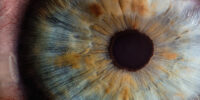What Is the Importance of Proper Lighting for Eye Comfort

Proper lighting plays a crucial role in maintaining eye comfort and health. Understanding the impact of lighting on the eyes is essential in creating an environment that promotes optimal visual comfort.
This article aims to explore the significance of proper lighting for eye comfort by examining the key factors that should be considered, how different lighting conditions can affect eye strain, and common mistakes that can negatively impact eye health.
Additionally, practical tips for creating an eye-friendly lighting environment will be provided.
Key Takeaways
- Blue light emitted by electronic devices and artificial lighting can harm the eyes and cause digital eye strain.
- Natural lighting helps regulate the body’s internal clock and reduces eye strain.
- Optimal lighting conditions, including appropriate brightness and color temperature, promote visual comfort and reduce eye fatigue.
- Strategies for minimizing eye strain include reducing glare, adjusting screen position, maintaining proper humidity levels, and taking regular breaks.
The Impact of Lighting on Eye Health
The impact of lighting on eye health is a significant consideration when it comes to promoting visual comfort and preventing potential eye strain or fatigue. Understanding blue light and the importance of natural lighting are crucial aspects in this regard.
Blue light, which is emitted by electronic devices and artificial lighting sources, can have harmful effects on the eyes. Prolonged exposure to blue light may lead to digital eye strain, dryness, and discomfort.
Natural lighting, on the other hand, provides a more balanced and soothing environment for the eyes. It helps regulate the body’s internal clock, known as the circadian rhythm, which affects sleep patterns and overall well-being. Incorporating natural lighting into indoor settings can reduce eye strain and promote a healthier visual experience.
Thus, considering the impact of both blue light exposure and the presence of natural lighting is essential for maintaining good eye health.
Understanding the Role of Lighting in Eye Comfort
This paragraph will discuss the key points of optimal lighting conditions and minimizing eye strain.
Optimal lighting conditions refer to the appropriate level of brightness and color temperature that promote visual comfort and reduce eye fatigue.
Minimizing eye strain involves implementing strategies such as reducing glare, using task-specific lighting, and taking regular breaks to prevent prolonged exposure to bright or dim lighting conditions.
Optimal Lighting Conditions
Optimal lighting conditions play a crucial role in ensuring eye comfort. When it comes to creating a comfortable and productive work environment, the lighting solutions used are of utmost importance. The right lighting can significantly enhance productivity and reduce eye strain, leading to improved overall well-being.
Utilizing optimal lighting solutions can minimize the occurrence of visual discomfort, such as headaches, eye fatigue, and dryness. Inadequate lighting can cause excessive glare, which can interfere with visual tasks and reduce productivity. On the other hand, an appropriate lighting setup can provide uniform illumination, minimize shadows, and reduce eye strain, leading to increased visual comfort and enhanced productivity.
Therefore, considering the impact of lighting on productivity is crucial in designing workspaces that promote eye comfort and overall well-being.
Minimizing Eye Strain
Minimizing eye strain is a crucial aspect of creating a conducive work environment that promotes visual well-being and productivity. To achieve this, reducing glare and preventing dry eyes are two key strategies that can be employed.
- Reduce glare: Glare, caused by excessive brightness or reflections on computer screens or other surfaces, can lead to eye strain. To reduce glare, it is important to position the screen at a comfortable angle and distance, use anti-glare filters or screens, and adjust the lighting in the room to minimize reflections.
- Prevent dry eyes: Dry eyes can contribute to eye strain and discomfort. To prevent dry eyes, it is important to maintain proper humidity levels in the workspace, take regular breaks to rest the eyes and blink frequently, and ensure adequate hydration by drinking enough water throughout the day.
Key Factors to Consider for Proper Lighting and Eye Comfort
One of the key factors to consider for ensuring proper lighting and eye comfort is the intensity of the light source. The intensity of the light refers to the brightness level emitted by the light source.
In terms of eye health, it is important to have an appropriate level of light intensity to prevent eye strain and discomfort. Insufficient light intensity can lead to squinting and straining of the eyes, which can cause headaches and eye fatigue.
On the other hand, excessive light intensity can cause glare and discomfort, leading to visual discomfort and decreased visual performance. Therefore, finding the right balance of light intensity is crucial for maintaining good eye health and ensuring optimal visual comfort.
How Lighting Conditions Affect Eye Strain
The impact of lighting conditions on eye strain is a subject of significant research and investigation. Several factors related to lighting can affect the strain experienced by the eyes.
- Blue light: Blue light emitted by electronic devices such as smartphones, tablets, and computer screens can contribute to eye strain. Prolonged exposure to blue light can lead to digital eye strain, causing symptoms like dryness, discomfort, and blurred vision.
- Brightness: Excessive brightness or glare can also strain the eyes. Bright lights that are too harsh can cause discomfort and make it difficult to focus on tasks.
- Natural lighting: Natural lighting has been found to have several benefits for eye comfort. It provides a more balanced and soothing light compared to artificial lighting. Exposure to natural light has been associated with improved mood, productivity, and reduced eye strain.
Understanding the impact of lighting conditions on eye strain can help in creating a comfortable and healthy visual environment.
Choosing the Right Lighting for Optimal Eye Comfort
To optimize visual conditions for eye health, selecting appropriate lighting is crucial. The type and quality of lighting fixtures used can significantly impact eye comfort. In recent years, there has been a growing emphasis on incorporating natural lighting into indoor spaces to promote eye health.
Natural lighting provides a balanced spectrum of light that closely resembles outdoor lighting conditions. This type of lighting is associated with reduced eye strain and improved visual comfort. Additionally, natural lighting is known to enhance mood and productivity.
When choosing lighting fixtures, it is important to consider factors such as color temperature, brightness levels, and glare reduction. By selecting lighting fixtures that mimic natural lighting conditions, individuals can create an environment that is conducive to maintaining optimal eye comfort and overall well-being.
Common Lighting Mistakes That Can Negatively Impact Your Eyes
When it comes to proper lighting for eye comfort, it is crucial to avoid common lighting mistakes that can negatively impact your eyes. These mistakes can lead to increased eye strain and discomfort, which can have long-term effects on your vision.
To minimize eye strain and create a more comfortable environment, it is important to be aware of the following common lighting mistakes:
- Insufficient lighting: Inadequate lighting can strain your eyes and make it difficult to see clearly, leading to eye fatigue and discomfort.
- Glare: Excessive glare from direct or reflected light sources can cause discomfort and make it challenging to focus on tasks.
- Improper color temperature: Using lighting with the wrong color temperature can affect your visual comfort. Bright, cool-toned lights can be harsh on the eyes, while warm-toned lights can create a more soothing environment.
Tips for Creating a Eye-Friendly Lighting Environment
This discussion will focus on two key points related to creating an eye-friendly lighting environment: optimal light color and reducing eye strain.
Optimal light color refers to the specific wavelengths of light that are most comfortable for the eyes. Different colors of light have different effects on our visual system, and finding the right balance is crucial for creating a comfortable environment. For example, warm colors like yellow and orange tend to be more relaxing, while cool colors like blue and white can be more stimulating. By understanding the impact of light color, individuals can choose lighting options that promote visual comfort and relaxation.
Reducing eye strain involves implementing strategies to minimize the discomfort and fatigue that can result from prolonged exposure to artificial lighting. This can be achieved by adjusting the brightness levels of lights, avoiding glare and reflections, and taking regular breaks to rest the eyes. Additionally, using task lighting and properly positioning light sources can help reduce eye strain by providing adequate illumination for specific activities without causing unnecessary strain on the eyes.
Optimal Light Color
The optimal light color for eye comfort is one of the important factors to consider when designing lighting systems. Choosing the right color can help prevent eye strain, enhance productivity, and create a comfortable environment.
Here are three key considerations when it comes to light color:
- Color temperature: Light color is measured in kelvin (K) and can range from warm (lower kelvin) to cool (higher kelvin). A color temperature of around 2700K to 3000K is ideal for promoting relaxation and reducing eye strain.
- Blue light exposure: Blue light, particularly from electronic devices, can cause eye fatigue and disrupt sleep patterns. Using lighting with lower blue light emission or incorporating filters can help reduce eye strain.
- Task-specific lighting: Different activities require different lighting conditions. For tasks that require focus and concentration, cooler light colors (around 4000K to 5000K) can help improve productivity and visual clarity.
Considering these factors when choosing light color can contribute to creating a visually comfortable and productive environment while minimizing eye strain.
Reducing Eye Strain
Natural lighting plays a significant role in creating an eye-friendly workspace and reducing eye strain. The benefits of natural lighting include improved vision, reduced glare, and decreased eye fatigue. Properly lit workspaces with natural light have been found to enhance productivity and overall well-being.
Natural light allows the eyes to focus more easily, reducing the need for excessive strain. Additionally, natural lighting provides a more balanced spectrum of light, which is essential for healthy vision. This type of lighting also helps regulate the body’s natural circadian rhythm, leading to better sleep patterns and increased alertness during the day.
Frequently Asked Questions
What Are the Long-Term Effects of Improper Lighting on Eye Health?
Long-term consequences of improper lighting include increased eye strain and reduced eye comfort. Adequate lighting helps prevent eye strain by providing optimal illumination, reducing glare, and minimizing the need for excessive visual effort.
How Does Lighting Affect the Quality of Sleep and Overall Well-Being?
The effects of lighting on productivity and the impact of lighting on mood are important considerations for understanding how lighting affects the quality of sleep and overall well-being.
Can Using Electronic Devices in Low Lighting Conditions Harm Our Eyes?
Using electronic devices in low lighting conditions can lead to eye strain and increased blue light exposure, which can harm eye health and decrease eye comfort. Proper lighting techniques, including natural lighting, can provide benefits, while artificial lighting may have drawbacks.
Are There Specific Lighting Techniques or Products That Can Reduce Eye Strain?
When considering lighting techniques for computer use and lighting products for eye strain relief, it is important to explore options that promote optimal illumination, reduce glare, and provide appropriate color temperature to enhance visual comfort during extended screen exposure.
How Does Natural Lighting Compare to Artificial Lighting in Terms of Eye Comfort?
When comparing natural lighting to artificial lighting in terms of eye comfort, it is observed that natural lighting offers benefits such as reduced glare and a better color rendering index, while artificial lighting may have drawbacks such as increased glare and negative effects on circadian rhythm.








